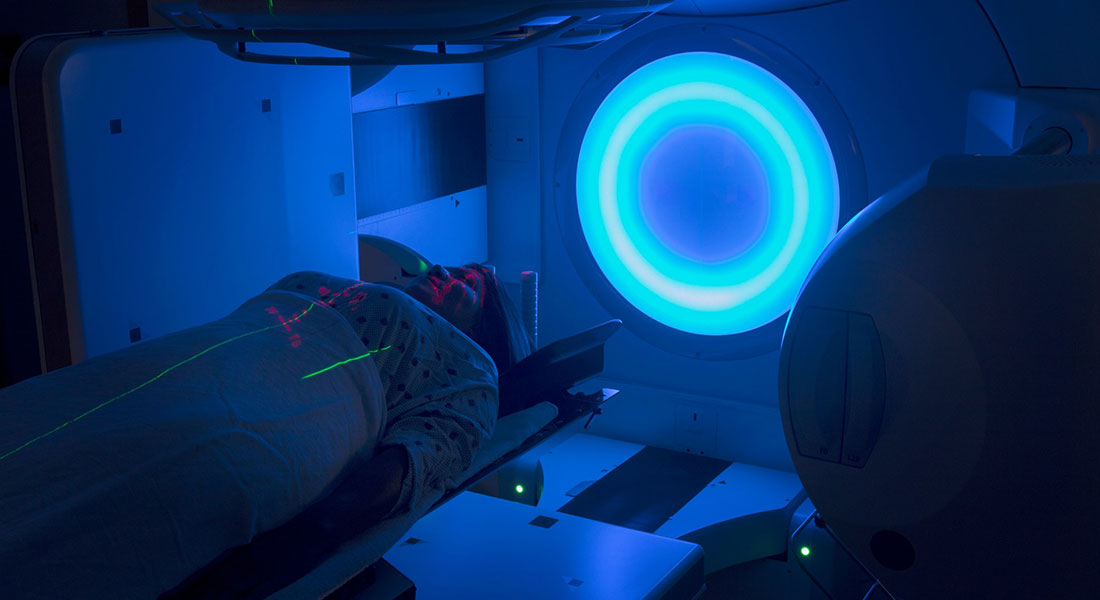Research discovery reveals how a cancer cell resists radiation treatment
Radiation is usually an effective treatment for cancer. Unfortunately, cancer cells are frequently able to defend themselves against the treatment. But now researchers from the University of Copenhagen have shown how cancer cells defend themselves, and their discovery may help ensure that this frontline treatment can save more lives.

In Denmark, cancer is the most frequent cause of death, and one of the most effective ways of fighting the disease is radiotherapy. Just over 362,000 Danes have been diagnosed with cancer, and eventually, half of them will need radiotherapy.
Radiotherapy is not perfect, though, as cancer cells can develop resistance to the treatment. Eventually, this means that cancer patients risk dying because the treatment is ineffective. But now researchers from the University of Copenhagen have discovered that an enzyme called Caspase-activated DNase (CAD) plays a key role in cancer cells’ response to radiotherapy.
“We have learned that CAD helps cancer cells circumvent radiotherapy, which means that it can continue to grow. When we remove CAD from the cancer cells, the effect of radiotherapy increases significantly,” says Associate Professor Claus Storgaard Sørensen from the Biotech Research & Innovation Centre (BRIC) and adds:
“We hope our discovery can pave the way for the design of drugs capable of inhibiting CAD, increasing the effect of radiotherapy and other types of cancer treatment.”
CAD tells cancer cells to delay division
Normally, CAD is part of our immune system, where the enzyme helps tidy up the cells.
“CAD is known to promote cell death, for example when a cell is infected with virus. This process is known as apoptosis and it is a perfectly normal part of the healthy body. But surprisingly, when it comes to cancer cells, we find that the opposite is the case. Here the enzyme helps ensure the survival of the cell,” explains Claus Storgaard Sørensen.
When cancer cells are exposed to radiotherapy, the chromosomes are severely damaged. This puts the cancer cells under time pressure, as they have to repair the chromosomes before they can continue to grow. It is in this process that the cancer cells exploit CAD for their own unique purpose.

“CAD gives the cancer cells a stop-growth signal. CAD does so by causing its own unique and limited damage to the DNA, which the cancer cells recognize as a stop-growth signal. Once this stop-growth signal happens, the cancer cell uses this opportunity to repair the entire broken DNA and restart its growth. Essentially, the cancer cell uses a controlled form of DNA damage to bypass and repair the damage caused by radiation,“ says Claus Storgaard Sørensen and adds:
”But if you remove CAD, the cancer cells lose the defense mechanism that gives them time to repair the chromosomes. The cancer cells will thus attempt to divide despite suffering from significant chromosomal damages induced by radiotherapy, which will lead to their demise. Hence, inhibiting CAD will increase the effect of radiotherapy.”
Easier to distinguish cancer cells from healthy cells
Aside from the discovery’s contribution to more effective radiotherapy, Claus Storgaard Sørensen and his colleagues hope it will make it easier to target cancer cells and thus protect the normal cells.
“CAD only tells cancer cells to delay division after radiotherapy; this does not happen to healthy cells, which are not regulated by CAD. Therefore, because we know that we are able to inhibit CAD, our discovery can help us target cancer cells exclusively. The ongoing development of CAD inhibitors is expected to result in more precise treatment, reducing the amount of side effects of radiotherapy,” says Claus Storgaard Sørensen.
Potential side effects of radiotherapy include damaged tissue and nerve damage in the areas subjected to radiotherapy.
The researchers behind the new study have already developed a treatment method inhibiting CAD, the effect of which has been proven in simple laboratory tests. But the road to actual drugs inhibiting CAD in people subjected to radiotherapy is long.
“I hope that we will see the first tests on humans within five years. But first we need the pharmaceutical companies to get involved.”
Read the full study, “Cancer cells employ self-inflicted DNA breaks to evade growth limits imposed by genotoxic stress”, in Science.
Claus Storgaard Sørensen's group has collaborated with researchers from the Danish Cancer Society, as well as researchers in Canada, Sweden, the Czech Republic and Switzerland. The research project is supported by the Danish Cancer Society, the Novo Nordisk Foundation and the Danish Independent Research Foundation.
Contact
Associate Professor Claus Storgaard Sørensen
+ 45 35 32 56 78
claus.storgaard@bric.ku.dk
Press and Communications Consultant Liva Polack
+45 23 68 03 89
liva.polack@sund.ku.dk
